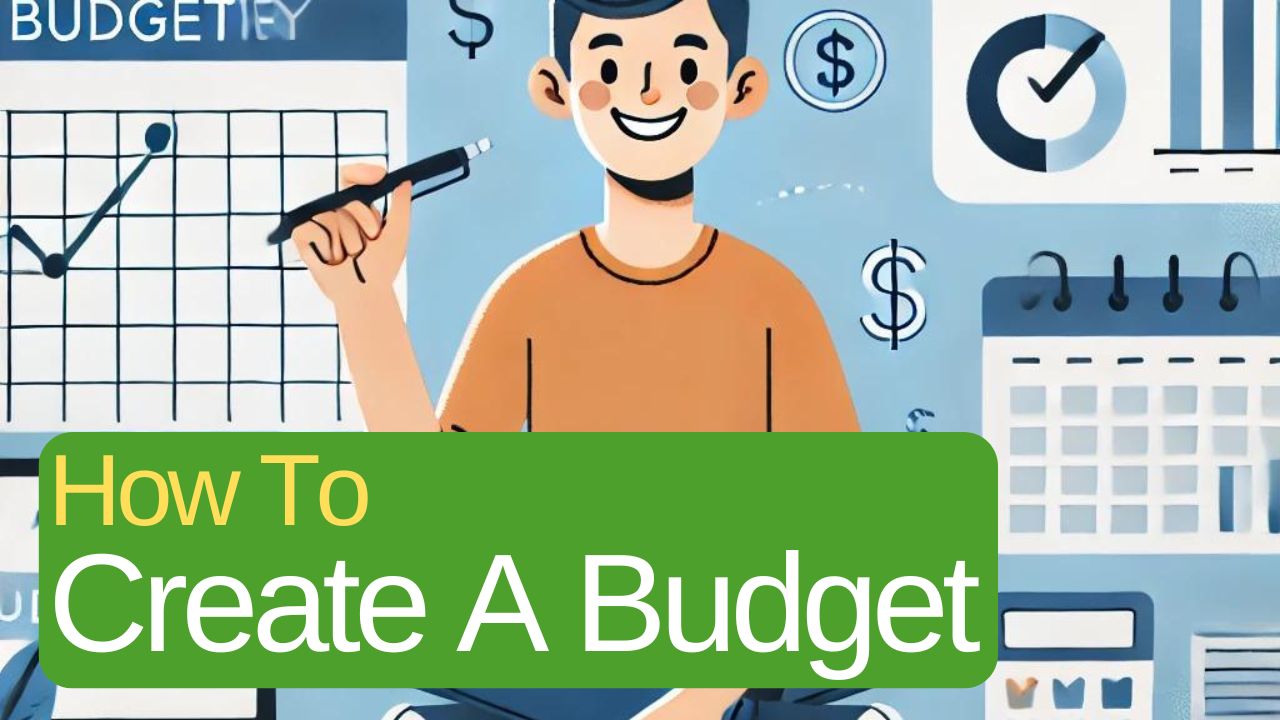Creating a budget is an essential skill for achieving financial stability and reaching your financial goals. Whether you’re trying to save money, pay off debt, or simply manage your expenses better, having a budget can help you take control of your finances. Therefore, this guide will walk you through the process of how to create a budget that works for you.

Understanding Budgeting and Its Importance
Budgeting is the process of creating a plan to spend your money. This spending plan is called a budget. By creating this plan, you can determine in advance whether you will have enough money to do the things you need to do or would like to do. Consequently, budgeting is important because it helps you manage your money, ensures you have enough for essentials, and helps you avoid debt and financial stress.
Step 1: Determine Your Income
The first step in creating a budget is to figure out how much money you have coming in each month. Your income includes any money you receive on a regular basis, such as your salary, freelance work, rental income, or government benefits. Additionally, make sure to calculate your total monthly income after taxes.
Tips for Determining Your Income:
- Include all sources of income: salary, bonuses, freelance work, and passive income.
- Use net income (after taxes and deductions) for a more accurate picture.
Step 2: Track Your Expenses
To create an effective budget, you need to know where your money is going. Consequently, tracking your expenses helps you identify spending patterns and areas where you might be able to cut back.
Methods for Tracking Expenses:
- Manual Tracking: Write down every expense in a notebook or a spreadsheet.
- Apps: Use budgeting apps like Mint, YNAB (You Need A Budget), or PocketGuard to automatically track and categorize expenses.
- Bank Statements: Review your bank and credit card statements for a comprehensive view of your spending.
Step 3: Set Financial Goals
Setting financial goals gives you a clear direction for your budget. These goals can be short-term (saving for a vacation) or long-term (buying a house, retirement). Thus, your goals will guide your spending and saving decisions.
Examples of Financial Goals:
- Short-Term Goals: Emergency fund, debt repayment, vacation savings.
- Long-Term Goals: Retirement savings, home purchase, college fund for children.
Step 4: Categorize Your Expenses
Divide your expenses into categories to get a clear understanding of where your money is going. Common categories include:
- Needs: Rent/mortgage, utilities, groceries, transportation, healthcare.
- Wants: Dining out, entertainment, hobbies, subscriptions.
- Savings/Debt Repayment: Emergency fund, retirement, paying off credit card debt or loans.
How to Create a Budget Plan
Now that you have all the information, it’s time to create your budget plan. Allocate your income to each expense category based on your financial goals and spending habits. Ensure that your total expenses do not exceed your income.
Tips for Creating a Budget Plan:
- 50/30/20 Rule: Allocate 50% of your income to needs, 30% to wants, and 20% to savings and debt repayment.
- Adjust as Needed: If your expenses exceed your income, look for areas to cut back or find ways to increase your income.
- Be Realistic: Set realistic spending limits that you can stick to.
Monitor and Adjust Your Budget Regularly
A budget is not a set-it-and-forget-it plan. Regularly review your budget to ensure it reflects your current financial situation. Moreover, adjust your budget as needed to account for changes in income, expenses, or financial goals.
Tips for Monitoring and Adjusting Your Budget:
- Monthly Review: Check your budget at the end of each month to see if you stayed within your limits.
- Adjust for Changes: Modify your budget for any changes in income or unexpected expenses.
- Stay Flexible: Life is unpredictable; be prepared to adjust your budget as needed.
Benefits of Maintaining a Budget
Maintaining a budget is one of the best ways to manage your money and achieve your financial goals. By following these steps, you can create a budget that works for you, helping you to save money, reduce debt, and achieve financial stability. Consequently, start budgeting today and take control of your financial future.
FAQ on How To Create A Budget
What tools can I use to create a budget?
You can use a variety of tools to create a budget, including spreadsheets (Excel or Google Sheets), budgeting apps (Mint, YNAB, PocketGuard), and even pen and paper.
How often should I review my budget?
It’s a good idea to review your budget at least once a month. Regular reviews help you stay on track and make necessary adjustments.
What should I do if my expenses exceed my income?
If your expenses exceed your income, look for ways to cut back on non-essential spending, find additional sources of income, or adjust your financial goals.
How can I stay motivated to stick to my budget?
Set clear financial goals, celebrate small victories, track your progress, and remind yourself of the benefits of budgeting. Having a visual representation of your goals can also help keep you motivated.
By following these steps and using the provided tips on how to create a budget, you’ll be well on your way to creating a budget that helps you achieve financial success. Consequently, happy budgeting!













